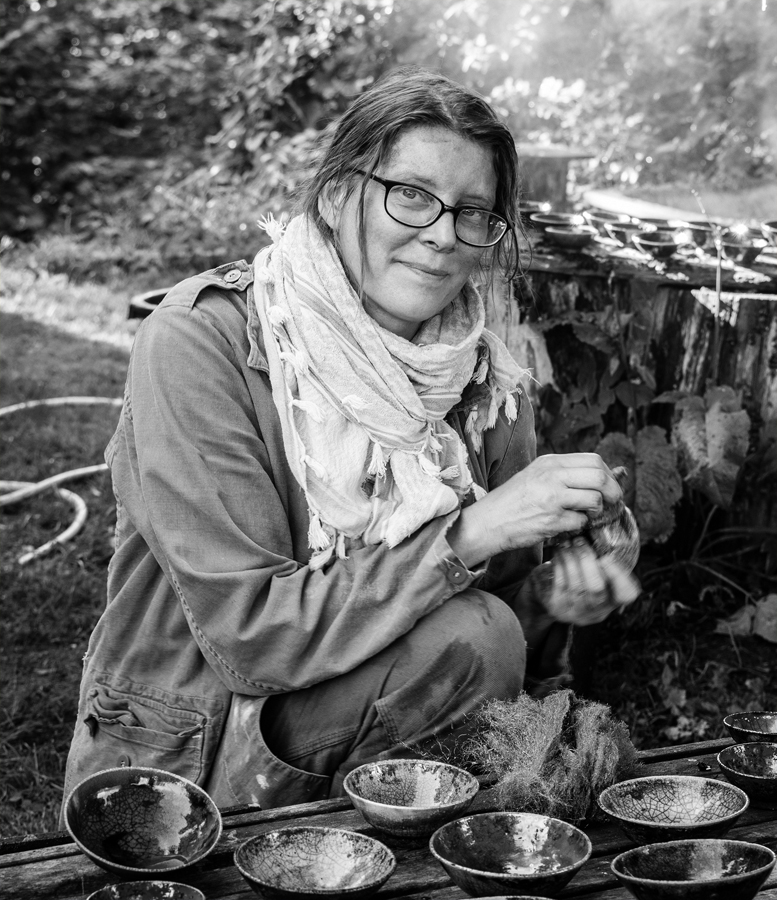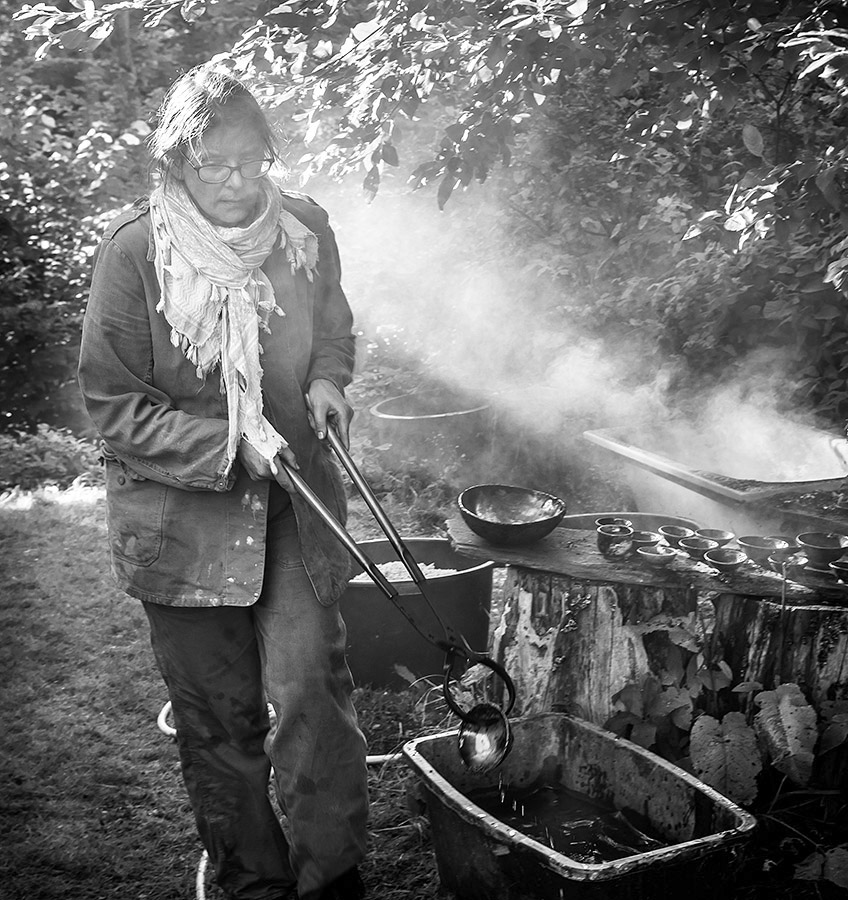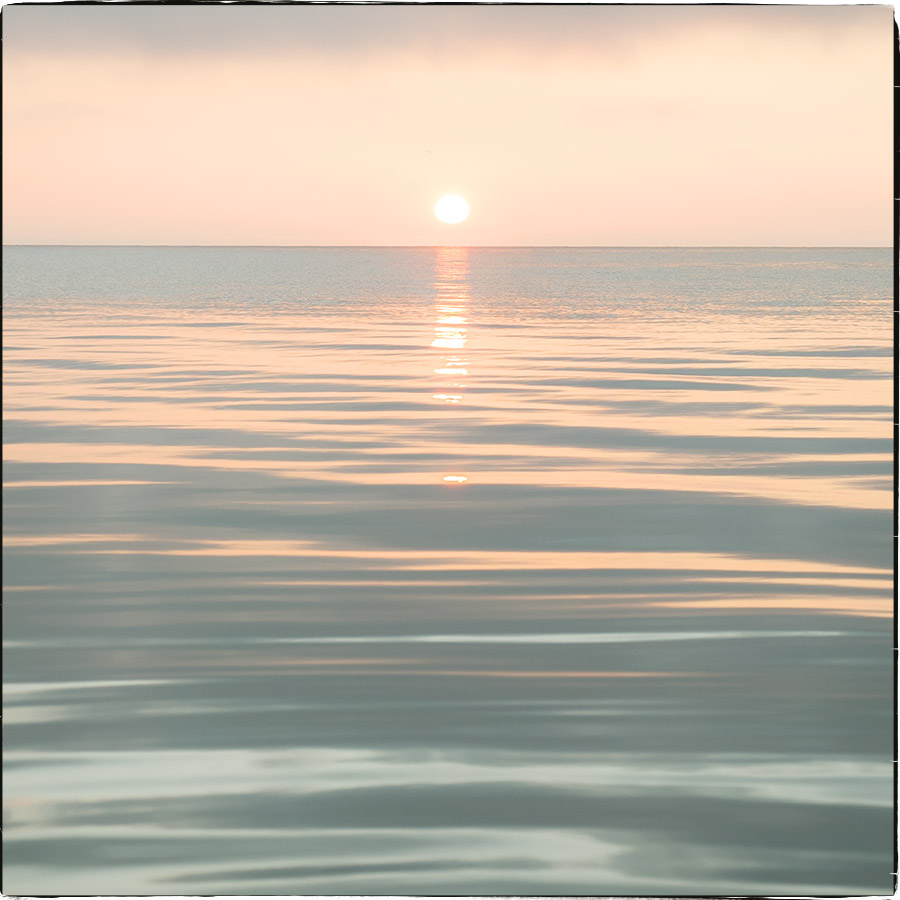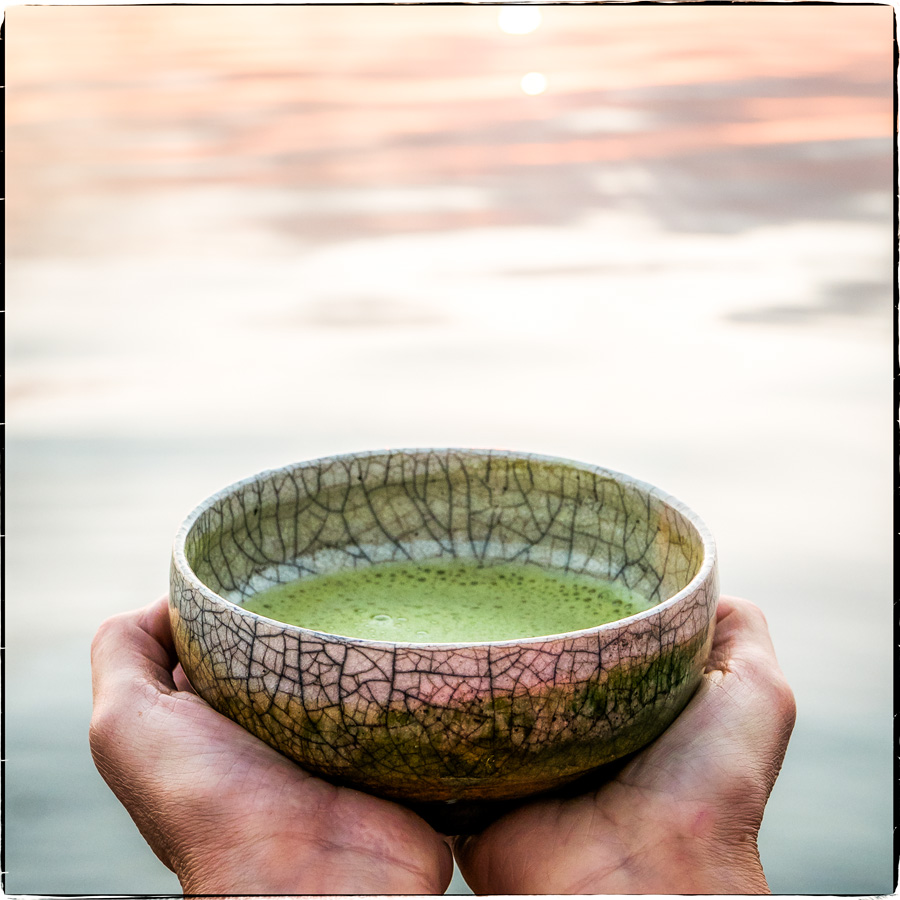
Cecilia Kraitz was born in Stockholm in 1964, but grew up on a southern slope just outside Förslöv in the northwest of Skåne. Her parents, Ulla and Gustav Kraitz moved to this beautiful place and have ever since worked together to develop their art and their distinctive sculptures – created in their kiln which produces the glaze according to an ancient Chinese technique.
Cecilia has also explored oriental traditions and methods and in her case it is the Japanese raku technique – a process that involves all the four elements: air, water, fire and earth. The raku pieces are created in a kiln that is fired with wood until the temperature has risen to 900 or 1000° C. The glaze melts in a relatively quick process and the red-hot wares are put into a container with damp sawdust or leaves where they are treated to a post fire reduction phase. This makes the glaze crackle and gives the raku piece its very special character.
Cecilia has been working with the raku technique for more than 30 years and is deeply fascinated by this unrestrained method with its origins in 16th century Japan. The more she learns about the philosophy behind the practice of raku the greater freedom she experiences in her artistic expression. It comes down to being open to what happens in the moment and being fascinated by the unexpected. To go about the work calmly knowing that magic may occur and also disaster. To be in awe of the asymmetric, the craggy and the modest. Crackles and roughness in the glaze are not considered faults but on the contrary signs of life in all its aspects, a beauty in close relation with nature. Wabi-sabi, the quintessential Japanese aesthetic, may be considered an antithesis of the strive for perfection that we westerners have such a passion for. We are chasing the perfect home, the perfect life. Wabi-sabi, on the other hand, reminds us that there is great beauty to be found in the imperfect, the temporary and the incomplete. Serenity is a keyword, to not always be chasing the future, but instead acknowledge the fragile beauty of the present moment. The word raku means happiness, ease and pleasure.
Ann Widerström, Galleri KONSTOCHFOLK, Stockholm

Cecilia Kraitz – född 1964 i Stockholm, sedan uppvuxen på en sydsluttning utanför Förslöv i nordvästra Skåne, en vacker plats dit hennes föräldrar, Ulla och Gustav Kraitz flyttade och där de sedan dess gemensamt utvecklat sin konst och sina särpräglade skulpturer – utförda med en uråldrig kinesisk brännteknik.
Cecilia har också i sitt eget konstnärliga utövande tagit till sig österländska traditioner och metoder. I hennes fall blev det den japanska rakutekniken – en process där samtliga fyra element används; luft, vatten, eld och jord. De keramiska föremålen bränns i en ugn som eldats med ved tills temperaturen stigit upp emot 900 eller 1000 grader. Glasyren smälter i ett relativt hastigt förlopp och sedan stoppas de glödheta föremålen ner bland fuktiga sågspån eller löv. Då sker en efterbränning som gör att glasyren krackelerar och ger rakukeramiken sin alldeles speciella karaktär.
I över 30 år har Cecilia jobbat med och hänförts av denna otyglade teknik med sina rötter i 1500-talets Japan. Ju större insikt i den japanska filosofin kring rakun desto större frihet känner hon i sitt konstnärliga uttryck. Det handlar om att vara öppen inför det som händer framför ögonen här och nu, fascinationen för det oväntade. Och att helt lugnt finna förtröstan i att det må bli magi eller katastrof. Här finns en vördnad för det asymmetriska, skrovliga och anspråkslösa. Krackeleringar och ojämnheter i glasyren anses inte som något fel utan som tecken på liv och mänsklighet, en skönhet i nära samspel med naturen. Wabi sabi-läran som utgör kärnan i den traditionella japanska estetiken kan ses som en antites till vårt västerländska vurmande för perfektion. Vi jagar det perfekta hemmet, det perfekta livet. I stället framhåller wabi sabi-estetiken att skönheten finns i det bristfälliga, tillfälliga och ofullständiga. Stillhet är ett ledord, att inte jaga framåt utan se den sköra skönheten i nuet. Det japanska tecknet för raku betyder lycka, lätthet och sinnlig njutning.
Ann Widerström, Galleri KONSTOCHFOLK, Stockholm



